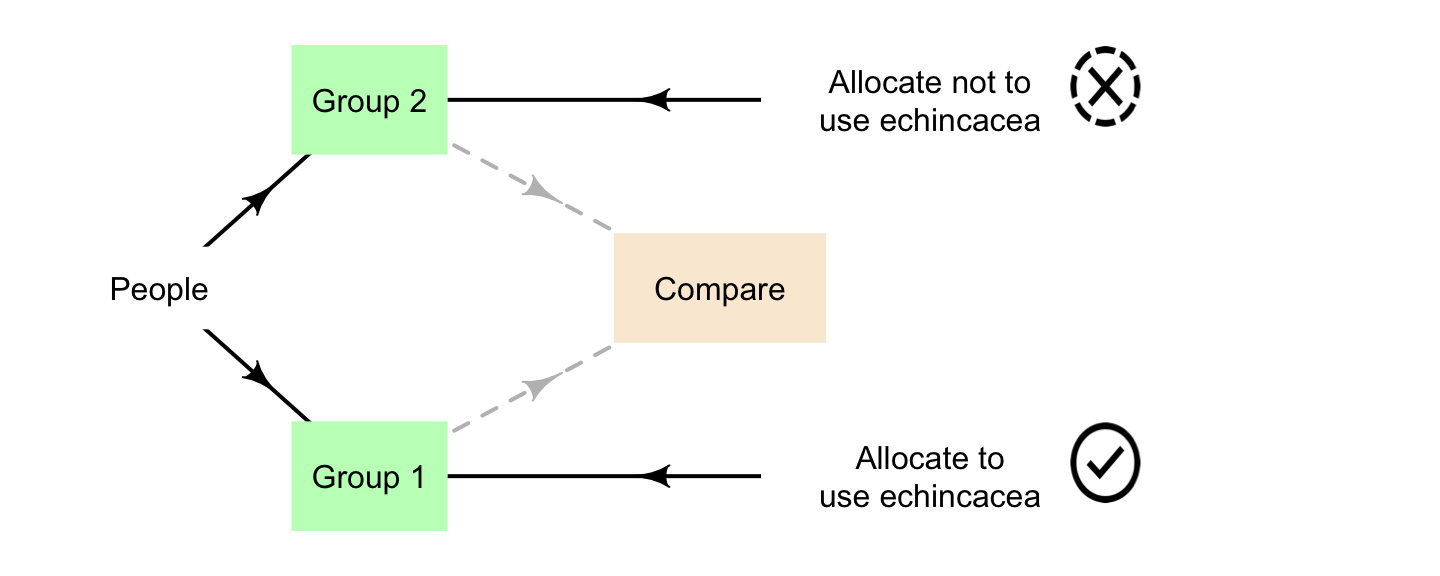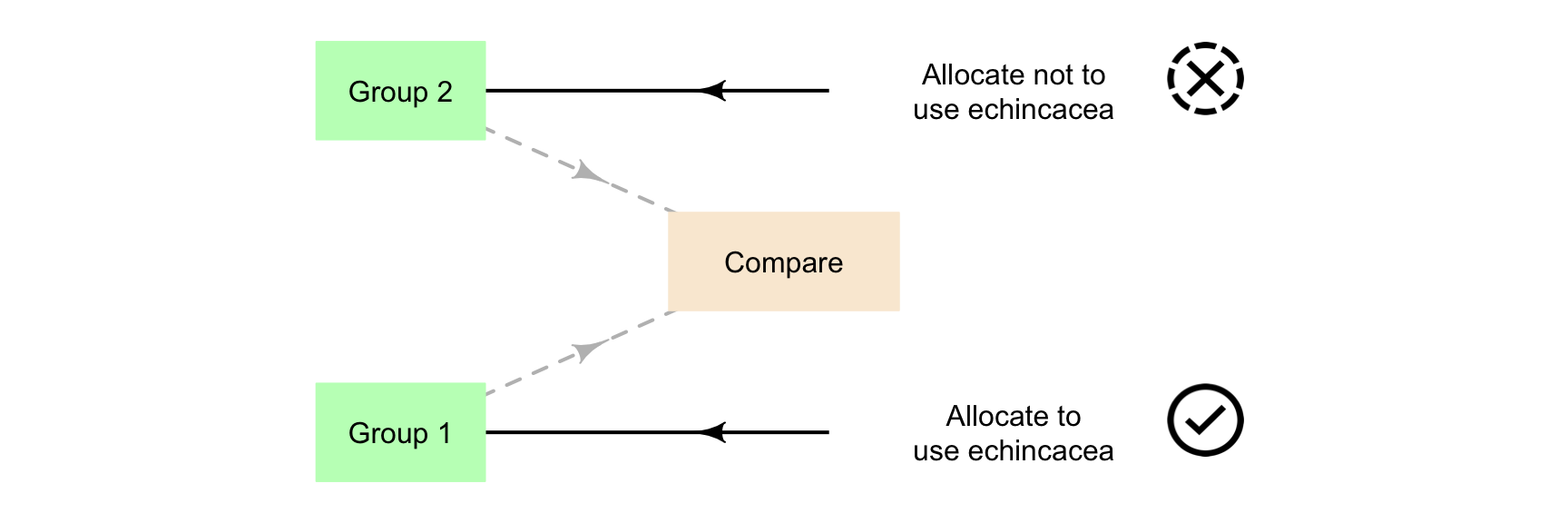3.4 Experimental studies
Experimental studies (Fig. 3.4), or experiments, are commonly used (and are discussed in more detail in Chap. 3.4). Well-designed experimental studies can establish a cause-and-effect relationship between the response and explantory variables. However, using experimental studies is not always possible.
In experimental studies, the researcher creates changes in the explanatory variable, and notes the changes in the response variable. That is, experimental studies are used to answer interventional RQs.

FIGURE 3.4: An experimental study, used to answer interventional RQs
Two types of experimental studies (Table 3.2) are:
| Study type | Researchers allocate who or what to groups | Researchers allocate treatments to groups | Reference |
|---|---|---|---|
| True experiment | Yes | Yes | Sect. 3.4.1 |
| Quasi-experiment | No | Yes | Sect. 3.4.2 |
| Observational | No | No | Sect. 3.3 |
3.4.1 True experimental studies
True experiment are commonly used, but cannot always be conducted. An example of a true experiment is a randomised controlled trial, often used in drug trials.
Definition 3.6 (True experiment) In a true experiment, the researchers:
- allocate treatments to groups of individuals (i.e., decide the values of the Comparison/Connection used on the individuals), and
- determine who or what individuals are in those groups.


FIGURE 3.5: True experimental studies
Think 3.2 (Experimental study) A researcher wants to examine the effect of an alcohol awareness program (MacDonald 2008) on the amount of alcohol consumed in O-Week. She runs the program at UQ only, then compared the average amount of drinking per person at two universities (A and B). What type of study is this: observational or true experimental? Answer these questions to help:
- Does the researcher allocate treatments to the groups?
- Does the researcher allocate subjects to groups?
3.4.2 Quasi-experimental studies
Quasi-experiments are similar to true experiments, but treatment are allocated to groups that already exist (as in Example 3.2).
Definition 3.7 (Quasi-experiment) In a quasi-experiment, the researchers:
- allocate treatments to groups of individuals (i.e., decide the values of the Comparison/Connection used on the individuals), but
- do not determine who or what individuals are in those groups.


FIGURE 3.6: Quasi-experimental studies